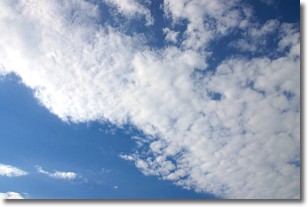Weather Alert in Alaska
Heat Advisory issued August 24 at 9:09AM AKDT until August 24 at 7:00PM AKDT by NWS Juneau AK
AREAS AFFECTED: Prince of Wales Island
DESCRIPTION: * WHAT...High temperatures up to around 80 degrees expected. * WHERE...Prince of Wales Island. * WHEN...Until 7 PM AKDT this evening. * IMPACTS...Individuals not accustomed to these unusually hot temperatures for this region may experience heat related illnesses. * ADDITIONAL DETAILS...Warm temperatures are expected into Sunday evening, reaching into the high 70s near the water and in areas prone to sea breeze influence, and into the low 80s away from the water. Generally warm temperatures continue through the start of the week. The warmest temperatures are expected from noon into the evening hours with overnight temperatures falling into the 50s.
INSTRUCTION: Drink plenty of fluids and check up on elderly and vulnerable relatives and neighbors. Young children and pets should never be left unattended in vehicles under any circumstances as vehicle interiors can reach extreme temperatures in as little as 10 minutes Take extra precautions when working in the sun. Wear sunscreen and lightweight, loose fitting clothing. Try to limit strenuous activities to early morning or evening. Take action when you see symptoms of heat exhaustion and heat stroke Close curtains during the daytime to reduce sun insulation into the home and open windows at night to allow the home to cool off. Utilize fans or community buildings with air conditioning.
Want more detail? Get the Complete 7 Day and Night Detailed Forecast!
Current U.S. National Radar--Current
The Current National Weather Radar is shown below with a UTC Time (subtract 5 hours from UTC to get Eastern Time).

National Weather Forecast--Current
The Current National Weather Forecast and National Weather Map are shown below.

National Weather Forecast for Tomorrow
Tomorrow National Weather Forecast and Tomorrow National Weather Map are show below.

North America Water Vapor (Moisture)
This map shows recent moisture content over North America. Bright and colored areas show high moisture (ie, clouds); brown indicates very little moisture present; black indicates no moisture.

Weather Topic: What are Stratus Clouds?
Home - Education - Cloud Types - Stratus Clouds
 Next Topic: Wall Clouds
Next Topic: Wall Clouds
Stratus clouds are similar to altostratus clouds, but form at a
lower altitude and are identified by their fog-like appearance, lacking the
distinguishing features of most clouds.
Stratus clouds are wider than most clouds, and their base has a smooth, uniform
look which is lighter in color than a nimbostratus cloud.
The presence of a stratus cloud indicates the possibility of minor precipitation,
such as drizzle, but heavier precipitation does not typically arrive in the form
of a stratus cloud.
Next Topic: Wall Clouds
Weather Topic: What are Altocumulus Clouds?
Home - Education - Cloud Types - Altocumulus Clouds
 Next Topic: Altostratus Clouds
Next Topic: Altostratus Clouds
Similar to cirrocumulus clouds, altocumulus clouds are
characterized by cloud patches. They are distinguished by larger cloudlets
than cirrocumulus clouds but are still smaller than stratocumulus clouds.
Altocumulus clouds most commonly form in middle altitudes (between 2 and 5 km)
and may resemble, at times, the shape of a flying saucer.
These uncommon formations, called altocumulus lenticularis, are created by uplift
in the atmosphere and are most often seen in close proximity to mountains.
Next Topic: Altostratus Clouds
Current conditions powered by WeatherAPI.com




